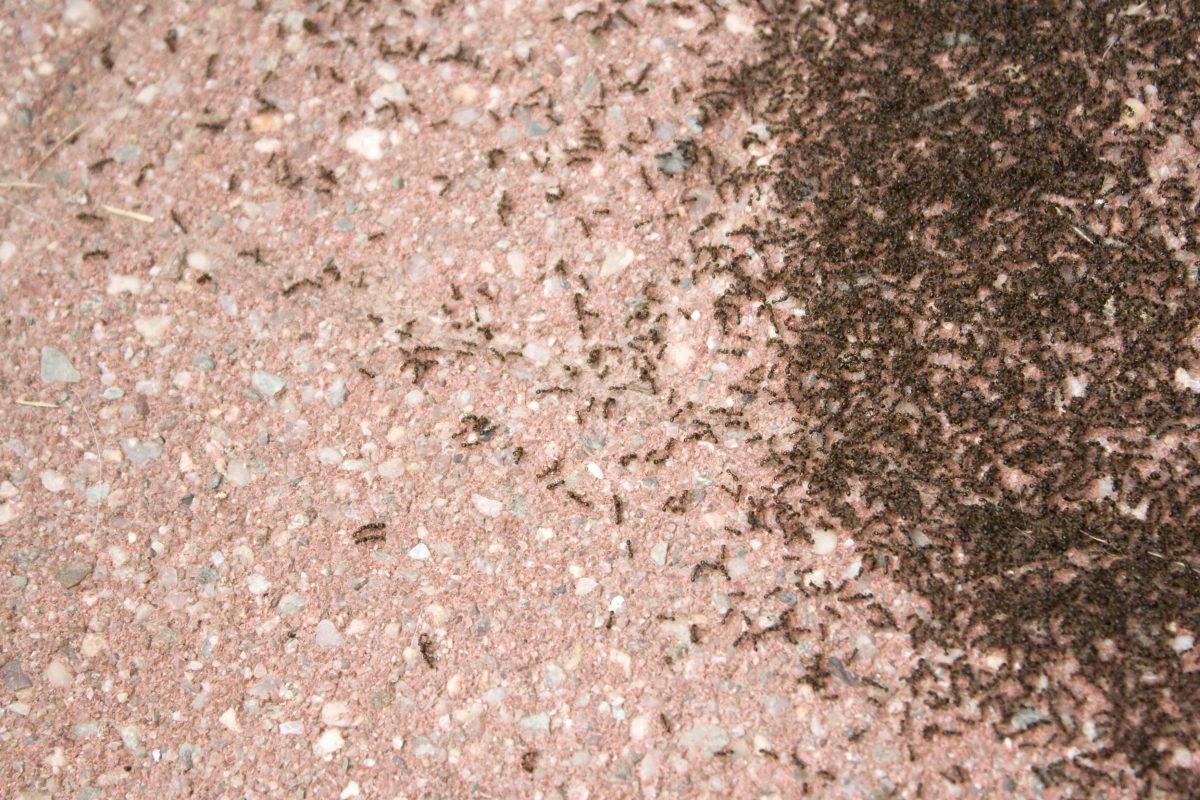
Understanding Ant Behavior
Before you can effectively rid your interlocking brick of ants, it’s essential to understand their behavior. By doing so, I’ll arm myself with the knowledge needed to outsmart these pesky intruders.
Firstly, let’s look at why ants might be attracted to your bricks in the first place. Ants love cracks and crevices because they provide a safe space for them to build their colonies. Interlocking bricks are a dream come true for them – full of nooks and crannies that make perfect homes!
Next up is food sources. Ants aren’t just hanging around because they like the view from your patio; they’re there on a mission: food hunting! These little creatures have an exceptional sense of smell which leads them straight towards:
- Leftover BBQ tidbits
- Spilled drinks
- Pet food left outside
If any of these sound familiar, then you’ve found another reason why ants have chosen your interlocking brick as their new hangout spot.
Let’s also consider ant trails – one ant finds a good source of food or water and leaves behind pheromone trails leading back home for others in its colony. This efficient system ensures even more ants join the party at my interlocked brick area.
Lastly but certainly not least is weather conditions affecting ant behavior. During rainy periods especially after heavy downpours, water can flood ant nests causing entire colonies relocate above ground level – often onto dry surfaces such as our dear old friend: The Interlocking Brick!
Remember this golden rule folks: Understand thy enemy before engaging in battle! And trust me when I say that knowing what makes these tiny critters tick will give us an upper hand while dealing with them.
Effective Strategies to Remove Ants from Interlocking Brick
Ant invasions can be a nightmare, especially when they take residence in your interlocking brick. But don’t worry, I’ve got some effective strategies up my sleeve that’ll help you get rid of these unwelcome guests.
First off, you need to clean the area thoroughly. Sweep away food crumbs and any debris that may attract ants. Then wash the bricks with a solution made of one part vinegar and three parts water. This not only cleans but also helps disrupt ant trails.
Next up is using ant baits or insecticides designed for outdoor use. These come in various forms like granules or liquid sprays:
- Granular Baits: You simply sprinkle them around infested areas.
- Liquid Sprays: They’re applied directly onto anthills or where ants are seen frequently.
Remember though, always follow manufacturer’s instructions when using such products for safety!
If chemicals aren’t your thing, natural methods can be just as effective:
- Diatomaceous Earth (DE): A non-toxic powder lethal to insects but safe for pets and humans.
- Boric Acid/Borax Mixtures: They work well as homemade bait solutions.
Lastly, if all else fails it might be time to call professionals who specialize in pest control services.
These strategies should put an end to your ant problem on interlocking brick surfaces! Just remember prevention is key – regular cleaning and maintenance will make your property less inviting for these tiny intruders!
| Method | Pros | Cons |
|---|---|---|
| Cleaning | Rids area of attractions. | Requires consistent effort. |
| Chemical Baits/Insecticides | Quick results. | May harm beneficial insects too. |
| Natural Methods | Environmentally friendly. | May require repeated applications |
Troy Channer is a seasoned professional with over a decade of experience in the construction industry, specializing in residential projects and road infrastructure networks. His expertise spans a broad range of skills, including proficiency in Microsoft Excel, Word, and PowerPoint, which he adeptly uses to streamline operations and enhance productivity.
Troy’s commitment to excellent customer service is a cornerstone of his professional philosophy, always prioritizing client satisfaction and fostering strong relationships. His leadership skills are well-recognized, and he has a proven track record of managing teams to deliver high-quality results.
In addition to his construction experience, Troy is also the proud owner of a successful landscape company based in Oakville. This venture allows him to apply his extensive knowledge of civil engineering and project management to create beautiful and sustainable outdoor spaces for his clients.
Troy holds an Advanced Diploma in Civil Engineering Technology from Humber College, further solidifying his credentials as a highly skilled operations professional in the industry. His combined experience and education make him a versatile professional capable of tackling a wide range of projects.








